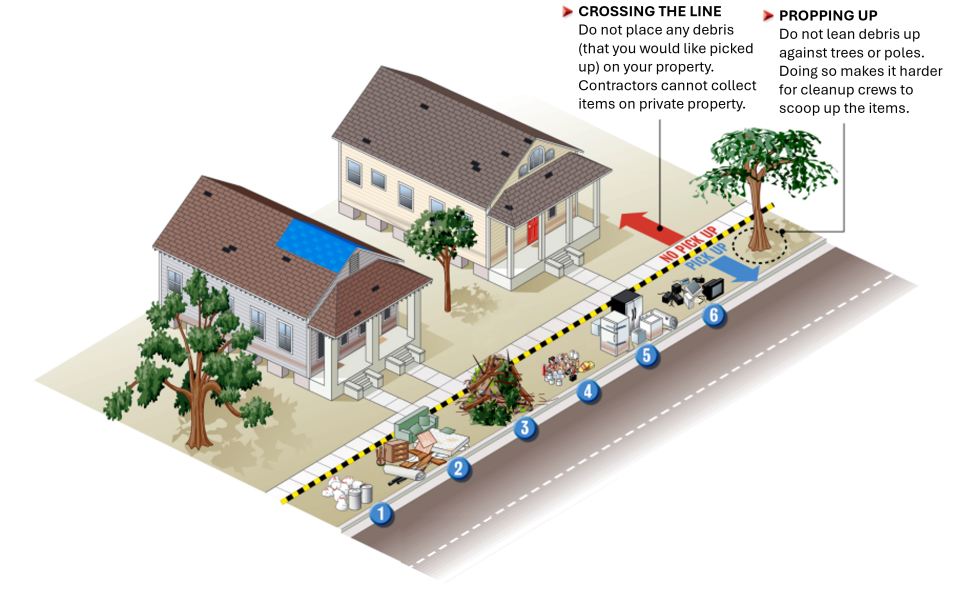Managing Debris After a Natural Disaster
On this page:
Placing Disaster Debris on the Curb
Check with your local government on how they recommend you separate and set out your disaster debris. Following their specific guidelines will make for a speedier removal process. Below is an example of curbside debris removal guidelines.
What to Know
Your local government may ask you to separate debris into these or other categories on your curb.
- Household Garbage
- Clothing
- Discarded food
- Packaging and paper
- Construction Debris
- Building materials
- Drywall
- Lumber
- Carpet
- Furniture and mattresses
- Shingles and roofing materials
- Plumbing
- Vegetative Debris
- Tree branches
- Leaves
- Logs
- Household Hazardous Waste
- Oils
- Batteries
- Pesticides
- Paints
- Cleaning supplies
- Compressed gas
- Large Appliances
- Refrigerators
- Washers and dryers
- Freezers
- Air conditioners
- Stoves
- Water heaters
- Dishwashers
- Electronics
- Televisions
- Computers, tablets
- Radios, stereos
- Telephones and cell phones
- Video game consoles
- DVD players
- Chargers and cords
What to Avoid

Tips
Always follow the guidance set forth by your local government.
Disaster debris can often be heavy, wet, or moldy. Be safe when handling it. Wear protective clothing, masks, or gloves, as appropriate.
Refrigerator and freezer doors must be secured with duct tape.
